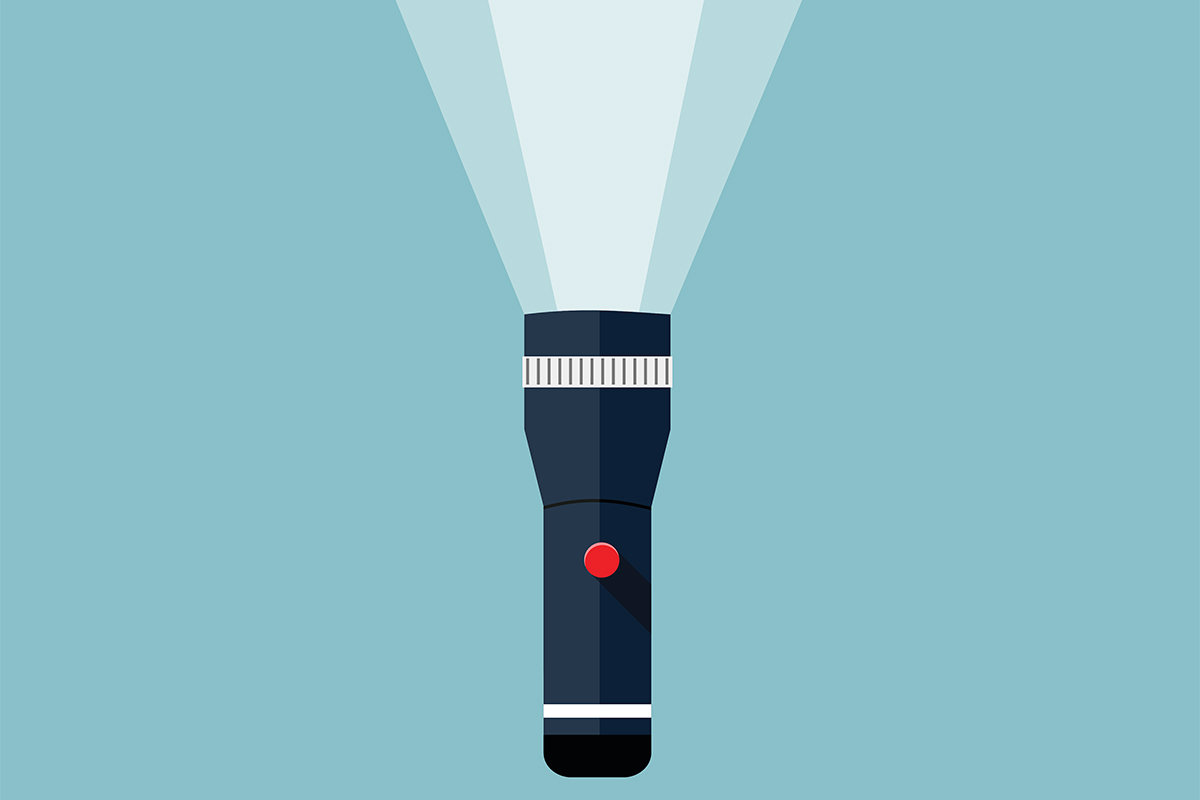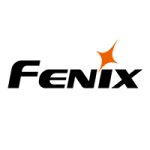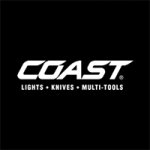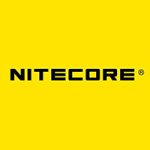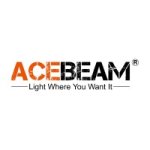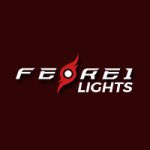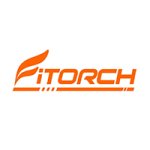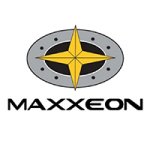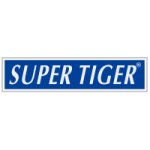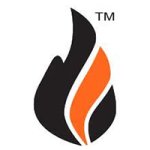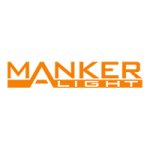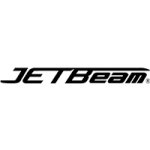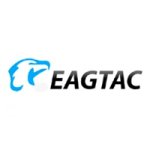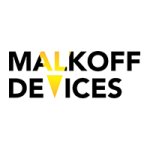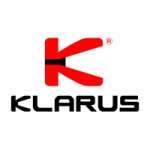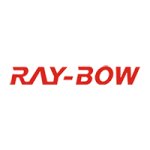LED technology has revolutionized the
flashlight industry, serving as a cornerstone in its evolution. The use of LED flashlights is widespread and has become the norm for various applications and user scenarios, including outdoor activities, camping, hiking, emergency preparedness, law enforcement, search and rescue, automotive maintenance, and everyday tasks. LED flashlights have become the standard choice for users seeking reliable, energy-efficient, and high-performance lighting solutions. The transformative impact of LED technology has led to a diverse and competitive market for flashlights. Numerous manufacturers strive to innovate and differentiate their products, resulting in a wide range of options with varying features, performance levels, and price points. As the technology evolves, people can expect flashlights with improved performance, enhanced features, and a broader range of applications, further solidifying LED flashlights as essential tools for various activities and industries.
Sustainable and dependable illumination
The widespread use of LED flashlights is a result of the numerous benefits they offer. One of the most significant transformations is the energy efficiency of LED flashlights. LEDs are highly efficient in converting electrical energy into visible light. This efficiency results in longer battery life, allowing LED flashlights to operate for extended periods on a single set of batteries. LEDs are known for their extended lifespan. Unlike traditional incandescent bulbs, which may last for only a few thousand hours, LEDs can endure for tens of thousands of hours of use. The solid-state nature of LEDs contributes to the durability of LED flashlights, making them more resistant to shocks, vibrations, drops, and impacts compared to flashlights with traditional incandescent bulbs. This durability enhances the overall reliability of LED flashlights, making them a preferred choice for users who require a rugged and resilient lighting solution. The extended lifespan of LEDs in flashlights as a result of significantly improved durability and reliability has practical implications that go beyond the simple longevity of the flashlights. It impacts users in terms of cost savings, convenience, dependability, environmental considerations, and overall satisfaction with the performance of LED flashlights over time. While LED flashlights may have a higher upfront cost due to the technology's initial manufacturing expenses, the longer lifespan and reduced need for replacement bulbs mean that users save money over time. This makes LED flashlights a more economical choice in the long run.
Controllable illumination
The excellent controllability of LEDs is a key factor that enhances the functionality of flashlights. LED flashlights provide instant illumination when turned on, with no warm-up time required. This instant-on feature enhances their usability in emergency situations and quick-response scenarios. LEDs have the inherent capability to be dimmed, meaning the intensity of the light they emit can be adjusted to any level. This dimming capability, often accompanied by multiple brightness settings, enhances the flexibility and adaptability of LED flashlights in various scenarios. The controllability of LEDs in flashlights allows for easy switching between different modes. These modes may include various brightness levels, strobe functions, SOS signals, or other specialized modes based on the design of the flashlight. This feature empowers users to adapt the light output to suit the specific demands of different tasks, activities, or emergency situations. Advanced LED flashlights go beyond traditional manual controls. They offer features such as remote control, connectivity to smartphone apps, and programmability, providing users with a high level of customization and adaptability. These smart features enhance the user experience and make these flashlights versatile tools for various applications.
Color your world
The spectral flexibility of LED technology empowers flashlight designers to manipulate
color temperature, enhance
color rendering, and create custom spectral outputs for various specialty applications. LED flashlights can be engineered to produce
white light with specific color temperatures, providing lighting that suits different environments or applications. LED technology allows for optimization of color rendering performance, ensuring that colors appear vivid and true under the flashlight's illumination. This is particularly important in applications where accurate color perception is crucial, such as in art, photography, or professional tasks. LED technology enables the creation of custom spectral outputs, including wavelengths beyond the visible spectrum. For example, LEDs can be engineered to emit ultraviolet light. This has applications in areas such as forensic investigations, detection of certain substances, and even specialized lighting in entertainment or artistic displays. LEDs can also be designed to emit infrared light. This is useful in applications such as night vision technology, where IR light is often used to illuminate dark environments without being visible to the human eye.
Optical excellence
The directional nature of LEDs allows flashlight designers to create focused and concentrated beams of light. This is particularly useful in applications where a concentrated and well-defined beam is required, such as search and rescue operations, outdoor activities, or tactical situations. Users can illuminate specific areas with precision. The focused and directional light output of LEDs enhances visibility in targeted areas. LED flashlights can be designed to provide clear and well-defined illumination, improving visibility over longer distances or in challenging conditions such as low-light environments. LED flashlights can be designed with customizable beam patterns. Manufacturers can shape the optics to create spotlights, floodlights, or adjustable beams, offering users flexibility in adapting the flashlight's illumination to different scenarios and requirements. The directional nature of LEDs contributes to energy efficiency. Since LEDs emit light where it is needed without dispersing it in unnecessary directions, less energy is wasted. This efficiency is beneficial for battery-powered flashlights, as it helps extend battery life and allows users to get more use out of a single set of batteries. The directional nature of LEDs helps minimize light pollution by directing light only to the intended area. This is advantageous in situations where preserving night vision or avoiding disturbing wildlife is important.
Design innovation
The compact size of LEDs allows for greater flexibility in flashlight design compared to traditional light sources. LEDs can be arranged in various configurations, including clusters, arrays, or specific patterns. This flexibility in arrangement enables designers to optimize the distribution of light, achieving desired beam patterns and angles. The compactness and configurability of LEDs enable flashlight designers to create more compact, streamlined, and innovative products. This not only enhances the portability and handling of flashlights but also allows for a diverse range of form factors tailored to specific user needs and preferences. Flashlights can be crafted with minimalistic and ergonomic shapes, reducing unnecessary bulk and making them more user-friendly. This is especially beneficial for portable flashlights designed for everyday carry (EDC) or other situations where size and weight are critical factors. Whether fitting into a pocket, attaching to a keychain, or being stowed in a small bag, these flashlights are convenient for users to carry on a daily basis. The compact design of LED flashlights enhances their accessibility in various situations. Whether stored in a glove compartment, clipped to a belt, or kept in a pocket, these flashlights are easily accessible during emergencies or everyday tasks. LED technology allows for innovative form factors that go beyond traditional flashlight designs. Flashlights can be shaped and configured in unique ways to enhance functionality and aesthetics. This innovation is particularly noticeable in specialty flashlights and those designed for specific applications.
Diverse applications
LED flashlights find applications across a wide range of scenarios. LED flashlights designed for EDC are compact and lightweight, making them ideal for daily use. They can be easily carried in pockets, attached to keychains, or kept in bags for quick access to light in various situations. LED flashlights are essential tools for emergency preparedness. They provide reliable illumination during power outages, natural disasters, or other emergency situations. LED flashlights are widely used for outdoor activities such as camping, hiking, backpacking, and fishing. They offer portable and powerful lighting for navigating in the dark, setting up campsites, and performing various tasks in low-light conditions. LED flashlights designed for military, law enforcement, and security personnel often feature high lumen output, durable construction, and specialized functions like strobe modes for signaling and disorienting potential threats. LED flashlights with high brightness levels and long throw distances are valuable tools for search and rescue operations. Their powerful beams help illuminate large areas and improve visibility during nighttime operations. LED flashlights are useful for various home improvement tasks and do-it-yourself (DIY) projects. They provide focused and directional light, aiding in precision work and inspections. LED flashlights with adjustable brightness levels are used for reading and other close-up tasks. Their directional light is suitable for focused illumination without disturbing others. In various professional and industrial settings, LED flashlights are used for inspections, maintenance tasks, and general illumination in areas with limited light. LED flashlights are commonly used for automotive purposes, such as inspecting vehicles, changing tires, or performing repairs in low-light conditions. Some flashlights are designed to be stored in vehicles for emergency situations. Specialized LED flashlights designed for underwater use are used in activities like scuba diving and snorkeling. These flashlights are waterproof and provide illumination in aquatic environments.
Types of LED flashlights
LED flashlights are available in a diverse range of types. This variety is a pragmatic and thoughtful approach to meeting the diverse needs and preferences of users. Whether it's for everyday carry, outdoor adventures, professional use, or emergency preparedness, people can find a flashlight that specifically meets their needs. The variety of LED flashlights caters to the diverse environments in which they may be used. Flashlights designed for outdoor use, such as
camping lanterns or headlamps, provide illumination suitable for outdoor activities, while
tactical flashlights are designed for high-stress situations. People have different preferences when it comes to flashlights. Some may prefer compact options for easy portability, while others may prioritize high-intensity options for maximum brightness. The variety of types allows users to choose flashlights that align with their preferences. Certain tasks or professions require specialized features. Professionals in various fields, such as healthcare, law enforcement, and mechanics, often require specialized tools.
Penlights, for instance, serve as specialized tools for medical professionals during examinations. The variety of LED flashlights ensures that professionals have access to tools suited to their tasks. Different types of LED flashlights may come with specialized features. For example, UV flashlights have applications in forensics and counterfeit detection, while headlamps offer hands-free illumination for tasks that require both hands. LED flashlights cater to various lifestyles and preferences.
Rechargeable flashlights may appeal to those looking for sustainable and cost-effective options, while high-intensity flashlights are favored by individuals who prioritize maximum brightness.
Tactical LED flashlights are purpose-built for situations that require reliable and immediate illumination in high-stress environments. This includes law enforcement operations, military missions, and self-defense scenarios where quick and effective lighting is crucial. They often feature rugged materials such as aircraft-grade aluminum or reinforced polymer to withstand rough handling, impact, and harsh environmental conditions. The durability ensures that the flashlight can withstand the rigors of high-stress situations. Tactical flashlights typically have high lumen output, providing intense and far-reaching illumination. This brightness is essential for quickly assessing a situation, identifying potential threats, or navigating in low-light or complete darkness. To cater to various operational needs, tactical flashlights often come with multiple lighting modes. These may include high, medium, and low brightness settings, allowing users to adjust the intensity based on the specific requirements of the situation. Many tactical flashlights feature a strobe mode, which produces a rapid and disorienting flashing light. This mode can be used for signaling, creating confusion in potential threats, or as a self-defense tool. Law enforcement and military personnel may use the strobe mode to gain a tactical advantage in certain situations. Some tactical flashlights are equipped with crenelated (serrated or toothed) bezels around the head. These bezels can serve as a self-defense tool, providing an additional means of protection by creating a striking surface. In emergency situations, the flashlight can be used as an improvised impact tool. Some tactical flashlights are designed to be mounted on firearms or other weapons. This allows users to have a consistent light source when aiming or navigating in low-light conditions. Tactical flashlights often have a degree of water resistance or are fully waterproof. This feature ensures that the flashlight remains operational even in wet or adverse weather conditions, enhancing its reliability in the field.
EDC (everyday carry) flashlights are intentionally designed to be small in size and lightweight. This makes them easy to carry on a daily basis without adding significant bulk or weight to the user's belongings. These flashlights are crafted with the intention of being used regularly in everyday situations. They are not specialized for specific high-stress scenarios but are rather versatile tools meant to provide practical illumination for common tasks encountered in daily life. The compact nature of
EDC flashlights enhances their portability. They are designed to be easily carried in a pocket, attached to a keychain, or stored in a bag. This convenience ensures that users have quick access to a reliable light source whenever needed. EDC flashlights are well-suited for a range of everyday tasks that require additional light. These tasks may include finding items in low-light conditions, navigating in the dark, or reading in dimly lit areas.
Waterproof flashlights
Waterproof or water-resistant flashlights are designed to offer reliable illumination in wet or underwater conditions. Waterproof or water-resistant flashlights are designed with seals, gaskets, and specialized construction to prevent water from entering the flashlight's internal components. This design helps protect the electrical elements and maintain the functionality of the flashlight even in wet environments. Their construction and features make them suitable for outdoor activities, water-related adventures, and emergency situations where exposure to water is a possibility. Waterproof or water-resistant flashlights are commonly used in various outdoor activities, including boating, fishing, camping, hiking, and other adventures where exposure to water is likely. The water-resistant feature adds value to flashlights intended for emergency preparedness. In situations where unexpected rain or wet conditions may arise, having a flashlight that can withstand water exposure ensures it remains operational when needed most.
SAR flashlights
Search and rescue (SAR) LED flashlights are equipped with high-lumen output to provide intense and far-reaching illumination. This is crucial for searching large areas or locating individuals at a distance, especially in low-light or nighttime conditions. They commonly feature strobe and SOS (distress signal) modes. Strobe modes can be used for signaling or disorienting purposes, while SOS modes are essential for emergency communication in situations where visibility is critical. Search and rescue operations can be physically demanding, requiring tools that can withstand harsh conditions. SAR LED flashlights are built with rugged materials such as aircraft-grade aluminum or reinforced polymer to endure impact, weather exposure, and other challenges encountered in the field. Given that search and rescue missions may involve exposure to water, SAR flashlights are often designed to be waterproof or water-resistant. This ensures that the flashlight remains operational in wet conditions, such as during water rescues or in rainy weather. Extended battery life is crucial for search and rescue situations, where operations may last for an extended period. SAR LED flashlights are designed to maximize battery efficiency, providing reliable illumination for prolonged use.
Multi-function LED flashlights offer a diverse set of features that go beyond basic illumination. These functions can include specialized lighting modes, built-in tools, or features designed for specific activities. Some multi-function flashlights are equipped with built-in tools or accessories that enhance their utility. This could include integrated bottle openers, screwdrivers, knives, or other tools that cater to various everyday needs. Some multi-function flashlights come with built-in power banks, allowing users to charge their electronic devices such as smartphones or tablets. Multi-function LED flashlights designed for emergency preparedness may include additional tools such as seatbelt cutters, window breakers, or emergency whistles. These tools can be crucial in various emergency situations, especially in vehicles. Lantern mode is a lighting option in some multi-function flashlights that allows the flashlight to emit light in a 360-degree pattern, similar to a traditional lantern. This mode is distinct from the typical focused beam of a flashlight and is designed for providing ambient lighting across a broader area.
LED penlights
Penlights are characterized by their slim and elongated design, resembling a pen. This form factor makes them easy to carry in a pocket or attach to a uniform, providing a portable and convenient lighting solution. The emphasis on a slender and lightweight design is aimed at ensuring ease of handling, especially in professional settings where precision and convenience are essential. Penlights find common use in various professional settings, with healthcare and medical environments being one of the primary applications. They are often used by doctors, nurses, and other healthcare professionals for tasks such as pupil examination and general medical inspection. The slim and focused beam of penlights makes them suitable for inspection tasks in various industries. They are commonly employed by technicians, mechanics, and quality control professionals to examine details in close proximity.
Keychain flashlights are small, compact LED flashlights designed to be attached to a keychain for easy portability. This portability makes them convenient for various situations, both planned and unexpected. The defining feature of keychain flashlights is their attachment to a keychain. This allows users to carry a reliable light source with them at all times, conveniently integrated with their keys. Keychain flashlights can be used in various scenarios, such as reading a menu in a dimly lit restaurant, checking a map, or locating items in a dark room. Despite their small size, keychain flashlights can be valuable in emergency situations. They provide enough illumination for basic tasks and can be particularly useful when other light sources are unavailable, such as during power outages or car troubles at night. Keychain flashlights are typically straightforward to operate. They may have simple on/off mechanisms or may be activated by twisting the flashlight body. The emphasis is on user-friendly operation for quick and easy use.
UV flashlights
UV flashlights, also known as blacklight flashlights, are designed to emit ultraviolet light. Ultraviolet light falls outside the visible spectrum of light that the human eye can see, with wavelengths shorter than those of visible light. UV flashlights are commonly used to detect security features in documents, currency, and identification cards. Geologists and mineralogists use UV flashlights to identify certain minerals that exhibit fluorescence under ultraviolet light. This can provide insights into the composition of rocks and minerals. UV light can reveal the presence of certain bacteria and microorganisms on surfaces. UV flashlights are employed in sanitation and hygiene assessments, especially in healthcare settings. UV light is used in the inspection of artworks and antiques. It can reveal hidden details, repairs, or alterations that may not be visible under regular lighting conditions. UV flashlights are used in banking and cash handling to verify the authenticity of banknotes. Security features, such as UV-sensitive strips, become visible under UV light. UV light is effective in revealing pet stains (urine, feces) on carpets and other surfaces. The stains fluoresce under UV light, making it easier to locate and clean affected areas.
IR flashlights
IR flashlights, or Infrared flashlights, are devices that emit infrared (IR) light, which is beyond the range of human vision. One of the primary applications of IR flashlights is in providing illumination for night vision devices. Night vision goggles and cameras can detect infrared light, allowing users to see in low-light or completely dark conditions. IR flashlights enhance visibility without revealing the user's position to those without night vision equipment. IR flashlights are used in security and surveillance applications to illuminate areas under surveillance cameras. This helps security systems capture clearer images and videos during nighttime or low-light conditions. IR light is sometimes used in photocatalytic processes for certain chemical reactions or material treatments. IR flashlights can be employed in controlled environments for these applications.
Diving flashlights
LED dive lights are essential tools for underwater enthusiasts, providing reliable illumination and safety during diving activities. These flashlights are built with a waterproof design to ensure they remain functional and safe in underwater conditions. The waterproofing is essential to prevent water from entering the flashlight, which could otherwise lead to malfunctions or damage. Diving flashlights are constructed to withstand the pressure experienced at various depths underwater. The materials used in their construction are chosen for their ability to resist pressure, ensuring the flashlight's integrity during deep dives. Given the corrosive nature of saltwater, diving flashlights are often made from corrosion-resistant materials, such as aluminum or other alloys. Diving flashlights often have attachment points or features that allow them to be secured to diving gear, such as straps or D-rings.
System integration
An LED flashlight as a holistic system with various components working synergistically to achieve the common goal of providing efficient and reliable illumination. Flashlights use various types of LEDs to cater to different lighting needs and preferences.
High-power LEDs are often used in tactical flashlights, searchlights, and other situations where long-range visibility is crucial,
COB LEDs excel in providing even and wide-angle illumination, while
mid-power LEDs offer a balanced solution for various everyday lighting needs. Optics, including lenses and reflectors, are essential for shaping and directing the light emitted by the LED. Different flashlight types may have specific optics designed for tasks such as focusing the beam, creating a floodlight effect, or providing a balanced combination of both. Effective
thermal management is essential for maintaining the LED's performance, preventing overheating, and ensuring the overall longevity and reliability of the flashlight. The internal circuitry and electronics manage the power distribution, control the brightness levels, and facilitate any additional features or modes. This includes regulating the voltage supplied to the LED to maintain consistent brightness and prevent damage. The switching mechanism, whether a physical button, electronic switch, or a combination of both, is crucial for controlling the flashlight. It determines how the flashlight is turned on, off, and cycled through various modes (e.g., high, low, strobe). The design of the flashlight, including its shape, size, and ergonomics, influences how comfortable and practical it is to use. Factors like grip, weight distribution, and the placement of the switch contribute to the overall user experience.
Power source
LED flashlights use various types of batteries, and the choice of battery depends on factors such as the flashlight's design, intended use, and power requirements. Alkaline batteries are widely available and commonly used in many consumer-grade LED flashlights. They are convenient, affordable, and provide decent performance for everyday use. However, they may have a shorter lifespan compared to other types of batteries, and their performance can degrade at low temperatures. Lithium batteries offer several advantages, including higher energy density, lighter weight, and better performance in cold temperatures compared to alkaline batteries. They are often used in high-performance LED flashlights, especially those designed for outdoor activities, camping, or professional use. Rechargeable
Li-ion batteries are commonly used in tactical flashlights, searchlights, and other applications where a longer runtime and higher output are required.
Rechargeable batteries used in LED flashlights can be charged through various methods, including USB charging, solar charging, or hand-cranking. This flexibility in charging options enhances the convenience and adaptability of LED flashlights with rechargeable batteries.
